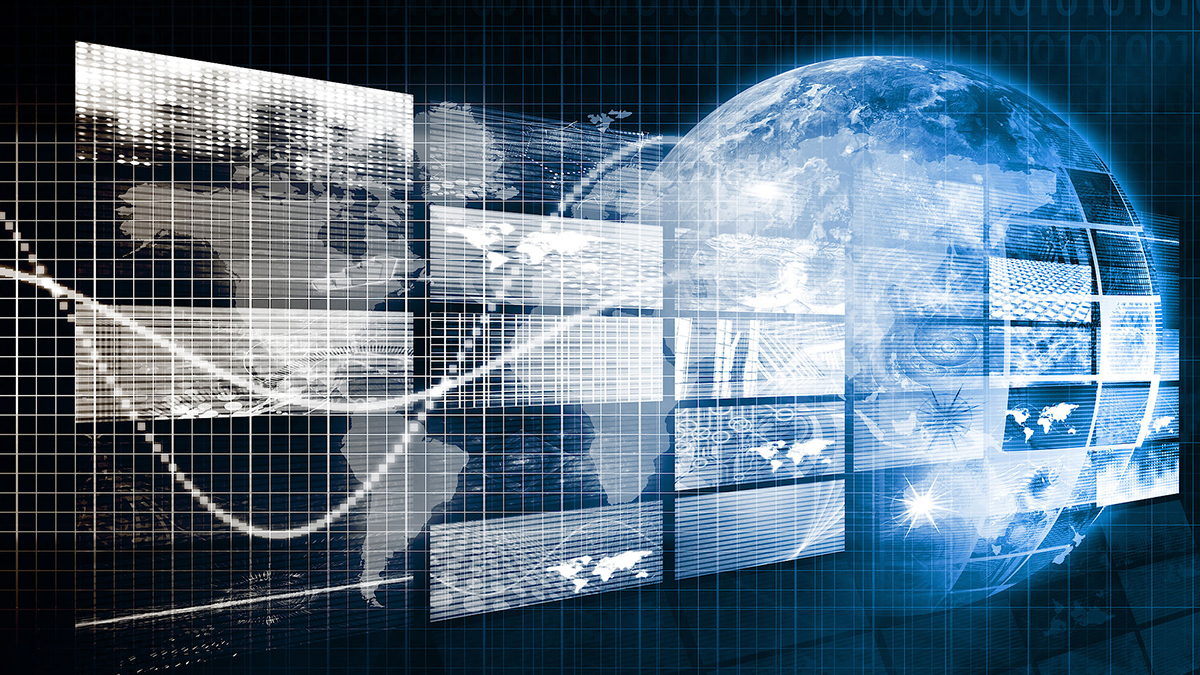The goal of Making Indonesia 4.0 is to achieve Indonesia’s entry into the top ten economies in the world by 2030. The roadmap of Indonesia’s Industry 4.0 is the key to enhancing the overall competitiveness of Indonesia’s industry in the future digital era, guiding the implementation of Indonesia’s national strategy, and where the interests are at stake. Cooperation and coordinated implementation between various industries aim to promote inclusive national growth and sustainable community welfare.
The Indonesian government has accelerated the promotion of "Making Indonesia 4.0" and introduced the Super Deduction Tax policy plan to encourage companies to invest in talent training and R&D innovation. The tax deduction rate is as high as 300%, which accelerates the development of the Indonesian market and enhances investment and trade with other countries.
Indonesian industrial services can enhance the competitiveness of Indonesian industries. For example, industrial services have lower production costs through more affordable prices. At present, the contribution of Indonesian industrial services to Indonesia's GDP reaches 4-5%, which does not include the 19% contribution of manufacturing to GDP. Optimizing industrial services will enhance the competitiveness of Indonesian products. The Indonesian Ministry of Industry has also pledged to take measures to enhance the competitiveness of industrial services. Human resources are also very important for industrial services. The Indonesian Ministry of Industry will link industry and vocational schools through industrial vocational training programs to improve the quality of human resources. Indonesia's industrial service projects include logistics services, research and development services, product promotion, and industrial professional certification.
The vision and goal of industrial development must be a long-term plan. The Making Indonesia 4.0 policy will give priority to the development of five industries and become the main force in the implementation of the Indonesian Industry 4.0 revolution. According to the research results, food and beverages, textiles and garments, automobiles, chemicals, electronics, etc. will contribute 60% of Indonesia’s GDP, and the implementation of Industry 4.0 will help maximize production speed and quality. To fully support the development of Indonesia's Industry 4.0, it will be necessary to promote its relevant components, networks, and applications. Therefore, the Ministry of Industry will promote the establishment of the Indonesian Digital Competence Center (DCC).
The vision and goal of Indonesia’s Industry 4.0, besides becoming one of the world’s top ten economies in 2030, will also be to strive to become one of the top five exporters of the global food and beverage industry, and one of the world’s top five textile and garment producers. Indonesia aims to be an electric vehicle exporting country, a manufacturer of components for the electronics industry, and a producer of biofuels and plastics.
Overview of the current situation of the Indonesian market:
- Indonesia is the largest economy in the ASEAN. In 2017, Indonesia's GDP reached approximately US$1.02 trillion, officially becoming an emerging trillion-dollar economy.
- In 2020, the COVID-19 epidemic hit the global economy severely, and Indonesia is also the most severely affected country in Southeast Asia. According to IMF statistics, Indonesia’s GDP declined by 2.1%.
- Taking into account the relative impact of transportation restrictions on overall consumption, the Bank of Indonesia will lower the economic growth rate in 2021 from 4.5-5.5% to 4.1-5.1%.
Indonesian private consumption and direct investment are the driving force for economic growth
- Indonesia has a population of 270 million and has a huge domestic demand market. Private consumption is an important pillar of Indonesia's economic development, and direct investment together accounts for 90% of GDP.
- In terms of industry analysis, manufacturing is still the sector with the highest contribution to economic growth, but the contribution ratio has been declining year by year since 2010. The manufacturing GDP accounted for 19.8% in 2020.
- Affected by the epidemic, the demand for health and social welfare services and information and communication fields has increased, and GDP in these fields grew significantly in 2020. Accommodation and catering services and transportation and storage are the two industries that have suffered the most.
With the impact of the epidemic, Indonesia's import, and export performance both declined.
- The epidemic has impacted manufacturing and private consumption, resulting in weak overall trade momentum. In 2020, Indonesia's foreign trade showed a surplus. Compared with 2019, the value of exports has declined slightly by 2.6%, and the value of imports has fallen by 17.3%.
- Since 2017, China has replaced the United States as Indonesia's largest export market for non-oil and gas products and Indonesia's largest trading partner. The bilateral trade has clearly shown a deficit. In 2020, Indonesia’s exports to China are US$29.9 billion, and imports from China are approximately US$39.3 billion.
- Taiwan has had a long-term bilateral trade deficit with Indonesia. In 2020, Taiwan’s exports to Indonesia were US$2.27 billion, and imports from Indonesia were about US$4.5 billion.
Overview of Indonesia's Industrial Development
- Automobiles: Indonesia is the ASEAN’s largest automobile consumer market and the second largest production base, second only to Thailand. Affected by the epidemic, Indonesia will only produce about 690,000 cars in 2020, and sales of cars will be about 532,000. Another important goal of Indonesia's automobile industry is to develop electric cars and locomotives in combination with Indonesia's rich nickel ore resources.
- Electronics/Information Communication: Indonesia's electronics industry is mainly concentrated in West Java and Riau Islands. According to the Indonesian Central Bureau of Statistics (BPS), in 2017, there were about 266 electronics manufacturers in West Java and 74 in Riau Islands. To strengthen the manufacturing capacity of the local industry, the Indonesian government has successively promulgated laws and regulations to increase the proportion of local manufacturing in Indonesia.
- Textile and garment: Textile and garment are an important export industry in Indonesia, with a complete supply chain whose main focus is on the island of Java.
- Shoemaking: The shoemaking industry is concentrated in Java, producing internationally renowned brand sports shoes, mainly exported to Europe and the United States.
- Food and beverage: Indonesia has a huge domestic demand market, and the food and beverage industry is the largest manufacturing sector contributing to GDP and its proportion of contribution has increased year by year. In 2020, the industry accounted for 6.85% of GDP.
- Shipbuilding: According to BKPM information, there are currently about 250 shipyards in Indonesia, but most of them can only build ships under 50,000 deadweights (DWT). The local shipbuilding-related industries can only manufacture about 30% of the parts and components, and the other 70% still must rely on imports. Shipyards are mainly concentrated in Batam and Java, which are adjacent to Singapore.
- Palm oil: Indonesia is the world's largest palm oil producer, and it is an important export-generating industry for Indonesia.
The concentration of foreign investment on the island of Java, dominated by secondary industries
- The amount of foreign direct investment (FDI) in 2020 increased slightly by 2% compared with 2019, reaching 28.66 billion U.S. dollars.
- Foreign investment is dominated by secondary manufacturing, and Indonesia's domestic investment has been concentrated in the service industry in recent years.
- Foreign investment is concentrated in Java. In 2020, West Java and Jakarta were the top two foreign investment regions, and the main administrative regions of Java cover 47% of the investment amount.
Investment information on setting up a factory in the Indonesian market
The Indonesian government continues to plan related policies and regulations, hoping to attract foreign investment, thereby promoting the development of Indonesia's industry, technological research, and development, and providing employment opportunities in related markets.
With a population of 267 million, Indonesia is the fourth most populous country in the world. It can provide manufacturers with abundant and low-cost labor and has a rapidly growing consumer market, making it an increasingly attractive production base. In recent years, Indonesia has also actively increased its attractiveness to foreign investors. Since 2014, the Indonesian government has been committed to attracting foreign investment through financial incentives, liberalization of foreign investment, and speeding up infrastructure construction.
The improved investment environment in Indonesia has prompted many Hong Kong manufacturers to consider setting up production bases in Indonesia. Hong Kong is currently one of the top five sources of foreign direct investment in Indonesia. From 2014 to 2019, Hong Kong's foreign direct investment flowing into Indonesia increased at an average annual rate of 34%. In 2019, more than half of foreign direct investment went to manufacturing.
Industrial clusters in Java, Indonesia:
Indonesia has a vast territory, and you must also pay attention to choosing the location that best suits its operational needs. Indonesia is the world's largest island country with 5 main islands, namely Sumatra, Java, Kalimantan, Sulawesi, and Papua. Java Island is Indonesia’s main industrial base, accounting for more than half of the country’s population and 70% of the added value of manufacturing. In Java, it is home to the manufacturing clusters of automobiles, electronics, machinery, and electric equipment, which includes global brands such as Toyota, Samsung, and Schneider. Java is close to the capital Jakarta, providing manufacturers with better infrastructure and an increasingly affluent consumer market.
However, as labor and land costs have risen, some manufacturers have moved to lower-cost areas, such as Central Java. Hong Kong manufacturers in labor-intensive industries may also consider setting up factories in Central Java to take advantage of local labor and land costs.
Industrial Park-Indonesia provides a better choice for foreign manufacturers
Many foreign manufacturers choose to set up factories in industrial parks because the industrial infrastructure outside the industrial parks is often underdeveloped, and they face higher risks in issues such as land purchase and construction permits. Indonesia currently has about 100 industrial parks in operation, more than half of which are in Java.
Many industrial parks are co-developing with foreign companies from Japan, Singapore, and China. The targets of such parks are usually foreign investors seeking more reliable production support. The Park generally provides comprehensive public facilities, including electricity, water supply, sewage treatment, and telecommunications, as well as one-stop services covering business licenses, construction permit applications, and worker recruitment. Due to these advantages, the land cost of these industrial parks is usually higher. Hong Kong manufacturers interested in setting up factories here should also consider the level of labor wages in the transportation infrastructure and surrounding areas.
Speed up Indonesia's infrastructure construction and improve logistics efficiency
The efficiency of Indonesia's transportation infrastructure is not as efficient as that of countries in the region such as Thailand and Malaysia. Therefore, manufacturers should expect higher logistics costs and more time-consuming. At the main international port in Indonesia, Tanjung Priok (IDTPP) in Jakarta, the time required to handle port affairs and border compliance is longer than the regional average. However, in recent years, Tanjung Priok's cargo detention time has gradually shortened. In the latest logistics performance index compiled by the World Bank in 2018, Indonesia ranked 46th, a significant increase from the 63rd in 2016.
Shortly, Indonesia’s transportation and logistics efficiency should be further improved, because President Widodo has listed infrastructure as a priority for his second term. The government has launched many transportation projects around Jakarta, such as the Greater Jakarta Light Rail System and the Jakarta-Bandung High-Speed Rail. In addition, the second toll road from Jakarta to Cikampek is the country's longest elevated highway. It was opened to traffic in December 2019 to ease traffic congestion between Jakarta and nearby cities in West Java. Manufacturers interested in setting up factories in West Java should consider industrial parks or areas with direct road access to facilitate the transportation of goods between the factory and Tanjung Prak Port in Jakarta.
Indonesia’s industrial supply chain is underdeveloped. In other words, companies must face additional logistics costs when importing raw materials, parts, and other materials. Although some low-value-added materials can be purchased from local suppliers, most of the raw materials and parts must still be imported. Indonesia's lack of packaging materials that meet the safety standards and corporate social responsibility requirements of developed markets such as the United States and the European Union has also become one of the reasons for the limited market development.
Indonesia's labor costs are competitive, and the minimum wage increase is predictable
Although the minimum wage in Indonesia is rising faster than other ASEAN countries, wage levels in major industrial areas are still low.
Respect religious customs and invest in employee training
Indonesia has a labor force of 134 million, with abundant labor supply and low cost, making the country an ideal production base for labor-intensive industries. In the areas around Greater Jakarta where factories are densely populated, it is not difficult to hire enough workers. However, it should be particularly noted that Indonesia is a predominantly Muslim country, and the country’s religious customs and practices should be respected, and related work patterns should be adjusted.
Since Indonesian workers tend to have lower vocational skills and are not as efficient as Chinese and Vietnamese workers, it is important to provide more intensive training and detailed guidance. Indonesian workers cherish learning opportunities, which also help build a sense of belonging to the company.







.jpg)
.jpg)

.jpg)

點-m-90454917_m.jpg)

